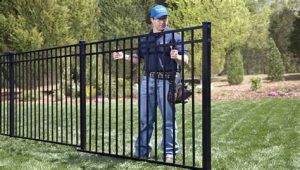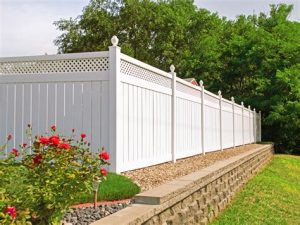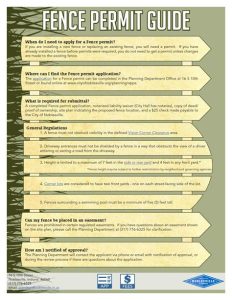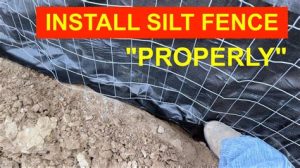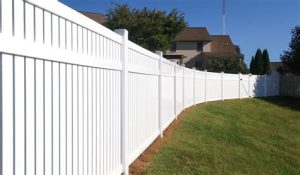Separate fact from fiction about fence permits. Understand when permits are necessary to avoid fines and ensure compliance with local regulations.When it comes to installing or modifying fences, many property owners operate under a series of misconceptions that can lead to costly mistakes. In this blog post, we aim to debunk common myths surrounding fence permits, shedding light on the realities that every homeowner should know. From the misconception that fences under six feet don’t require permits to the belief that only new fences need authorization, the facts can be surprising. While some may think the permit process is a complicated maze, we’ll explain how it can actually be quite straightforward. Plus, ignoring permit requirements can lead to fines and legal dilemmas. Join us as we explore these myths and help you navigate the world of fence permits with confidence and clarity.
Myth: Fences under 6 feet don’t need permits
One of the most common misconceptions about fence permits is that if a fence is under 6 feet, you don’t need to secure a permit. However, the reality is that permit requirements can vary significantly by location. Many municipalities have specific codes that dictate the need for permits based on various factors, including height, materials used, and fence purpose.
It’s essential to check your local building codes and regulations before starting any fencing project. In some areas, even a fence that is as low as 4 feet may require a permit. This means that assuming a fence of under 6 feet is exempt can lead to unexpected consequences such as fines or the need to remove the fence entirely.
Additionally, if you live in a community governed by a Homeowners Association (HOA), there may be additional rules and regulations regarding fencing that must be considered. Ignoring permit requirements can create complications that are easily avoidable with a little bit of research and due diligence.
Reality: Permit requirements vary by location
When it comes to building fences, one of the most significant myths is that permits are universally required or not required based on a single height, such as six feet. In reality, permit requirements can vary greatly depending on several factors including local regulations, zoning laws, and even homeowners association (HOA) guidelines. It’s crucial for property owners to do their due diligence and verify what is needed in their specific area.
In some municipalities, for instance, fences under a certain height may indeed not require a permit, while others might have different stipulations. This variance means that what might be permissible in one town could lead to fines or complications in another. Always check with your local city or county regulations before proceeding with any fence installation or modification.
Additionally, some areas might require permits for not only the fence’s height but also for its materials and type. Chain link, wood, vinyl, or even decorative fences might each have different permit requirements. Ignoring these regulations can lead to potential legal ramifications down the road, so staying informed is vital for any property owner looking to install or modify a fence.
Myth: Only new fences require permits
One prevalent myth surrounding fence permits is the belief that only new fences require them. This misconception can lead to unintended consequences for homeowners who make modifications to existing structures without proper authorization.
In reality, many local regulations stipulate that significant repairs or modifications to fences, including alterations in height, materials, or positioning, may necessitate a permit. It’s essential to acknowledge that changes to your fence might fall under local building codes or neighborhood guidelines, so it’s always best to check before proceeding with any project.
For example, if you plan to reinforce an old fence with new materials, extend its height, or shift its location, you may be required to submit a permit application to your local zoning authority.
Reality: Many repairs and modifications need permits
When it comes to fence installations, many property owners are under the impression that only new constructions require permits. However, the reality is that many repairs and modifications to existing fences often require permits as well. This is crucial information that can save homeowners from future complications.
In most municipalities, any significant alteration to a fence, whether it involves changing its height, relocating it, or even replacing certain sections, can trigger the need for a permit. Local building codes and regulations often govern this, and they can vary widely depending on the area where you reside. Ignoring these requirements can lead to enforcement actions down the line.
Furthermore, obtaining a permit before conducting repairs ensures that your work complies with zoning laws and helps maintain the aesthetic integrity of the neighborhood. In some communities, you may also need to adhere to Homeowners Association (HOA) guidelines, which can impose specific restrictions on fence modifications.
Myth: Permit process is complicated and time-consuming
The belief that the permit process for fencing is overly complicated and time-consuming is a common myth. In reality, obtaining a permit can be relatively simple and straightforward if you understand the steps involved.
Many homeowners assume that navigating through the bureaucracy of local government is a daunting task, often involving endless forms and meetings. However, most municipalities have streamlined their processes to facilitate home improvement projects like fencing. For instance, many cities offer online applications for permits, making it easier to submit necessary documents without ever needing to visit a government office.
When preparing to apply for a fence permit, it is essential to check local regulations and guidelines. Most municipalities provide comprehensive resources on their websites that outline the required paperwork, timelines, and fees associated with the permit process. By being informed and organized, property owners can often secure permits quickly and efficiently, debunking the myth that the process is inherently complicated.
Reality: Permit application can be straightforward
When it comes to obtaining a permit for your new fence, many homeowners are put off by the myth that the process is complex and time-consuming. In reality, the permit application process can be quite straightforward, especially if you are well-prepared and understand the local requirements.
To begin with, it is essential to check your local zoning regulations. Most municipalities have clear guidelines on what is required for a fence permit, and many of them provide online resources that outline the steps. Gather all necessary documentation, which may include property surveys and design plans, to facilitate a smooth application process.
Additionally, many local authorities encourage communication. It can be beneficial to contact your local planning office with any questions before submitting your application.
Myth: It’s okay to bypass permits to save time and money
Many homeowners believe that skipping the permit process is a smart way to save both time and money when it comes to building or modifying a fence. However, this myth can lead to serious consequences. Bypassing permits can create legal issues, fines, and unwanted complications down the line, which can ultimately cost you more than adhering to the required process.
When you decide to construct a fence without a permit, you run the risk of non-compliance with local zoning laws, building codes, and Homeowner Association (HOA) regulations. This can result in having to remove the fence, make costly modifications, or even facing penalties from local authorities. Therefore, the misconception that saving time and money is worth the risk is simply not true.
To ensure a smooth and legally compliant fencing project, always check with your local government office or HOA for proper permit requirements. Investing time in obtaining the correct permits not only protects you from fines but also ensures your fence is built to code and maintains the overall value of your property.
Reality: Potential fines and legal issues for unpermitted fences
One of the most common myths surrounding fence construction is that bypassing permit requirements can save property owners both time and money. However, the reality is that the consequences of unpermitted fences can far outweigh any perceived short-term benefits.
When property owners choose to build a fence without the necessary permits, they expose themselves to various risks. Local authorities often impose fines for violations, which can accumulate significantly depending on the municipality’s regulations. In some cases, fines can reach into the thousands of dollars, creating a financial burden that far surpasses the initial savings from avoiding the permitting process.
Moreover, unpermitted fences can lead to legal issues. If a neighbor files a complaint or if local officials discover the violation, property owners may be required to remove or modify their fence at their own expense. This not only involves additional costs but may also lead to a loss of time and may even impact the property’s value if it is deemed non-compliant with local zoning laws.
Myth: Property owners can build any type of fence without a permit
This common myth leads many property owners to believe that they have the freedom to construct any type of fence they desire without obtaining the necessary permits. However, the reality is quite different. In many localities, specific zoning regulations and Homeowners Association (HOA) rules may dictate what types of fences can be built, their height, materials, and positioning on the property.
For instance, some communities have strict guidelines regarding the appearance and size of fences to maintain a cohesive neighborhood aesthetic. Others may impose restrictions to protect views, natural light, or even the safety of residents. Not adhering to these regulations can lead to complications such as having to remove or modify the fence and potential fines.
Therefore, before embarking on your fencing project, it’s crucial to check with your local authorities or HOA to understand what is permitted. By doing so, you can avoid the headaches associated with non-compliance and enjoy your new fence without any issues.
Reality: Zoning regulations and HOA rules may apply
When planning to build a fence, many property owners may not realize that zoning regulations and Homeowners Association (HOA) rules can have a significant impact on their plans. It’s a common misconception that once you’ve checked local laws, you’re clear to proceed with your project. However, there are often additional layers of regulations that must be navigated, especially in residential areas where neighborhood standards are enforced.
Zoning regulations dictate not just whether you can build a fence but also dictate specific requirements such as height, materials, and placement. For instance, some communities may prohibit fences over a certain height in front yards or require that privacy fences feature a specific aesthetic. Additionally, failing to comply with these requirements can lead to the necessity of removing or modifying the fence, resulting in both time and financial loss.
Similarly, if you live in an area governed by an HOA, you are likely to encounter guidelines that can be even stricter than municipal regulations. HOAs often have design guidelines that dictate the type of fences allowed, colors that can be used, and even the types of landscaping that can accompany your fence. Ignoring these rules can lead to hefty fines and the requirement to dismantle the non-compliant structure.
Frequently Asked Questions
What is a fence permit and why is it required?
A fence permit is an official approval issued by local authorities that allows individuals to construct a fence on their property. It is required to ensure that the fence complies with zoning laws, safety standards, and aesthetic regulations within the community.
Do all types of fences require a permit?
Not all fences require a permit. Typically, temporary fences, decorative fences under a certain height, and certain types of agricultural barriers may be exempt. However, it is essential to check with local regulations to confirm the requirements for specific types of fences.
Is it true that I can build any fence I want without a permit?
This is a common myth. Most municipalities have specific regulations regarding property boundaries, height, materials, and designs for fences. Failing to obtain the necessary permit can lead to fines and may require the removal of the fence.
Can I assume that my neighbor’s fence permit covers my property too?
This assumption is incorrect. Each property owner is responsible for obtaining their own fence permit. A permit issued for your neighbor’s fence doesn’t grant you any rights to build on or over shared boundary lines without appropriate permissions.
What happens if I build a fence without a permit?
Building a fence without a permit can lead to legal repercussions, including fines and mandatory removal of the fence if it violates local codes. It may also result in disputes with neighbors.
How can I find out the specific regulations for fence permits in my area?
You can find out the specific regulations for fence permits in your area by visiting your local government’s planning or zoning office’s website. They often have guidelines and contact information for further inquiries.
Does obtaining a fence permit affect the value of my property?
Yes, obtaining a fence permit can positively impact your property value by ensuring that the fence is built according to local standards. A well-constructed and permitted fence also enhances the property’s aesthetic appeal and functionality.
